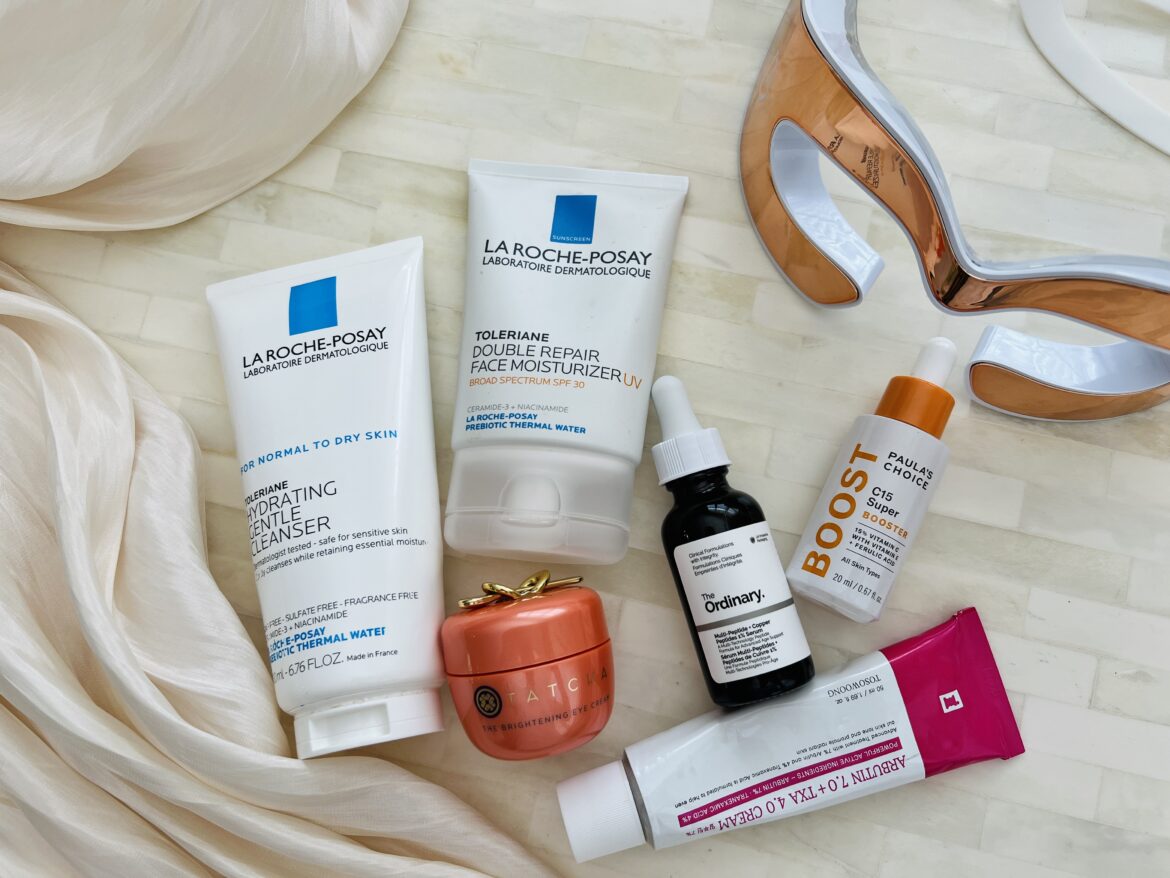If your face feels tight, flaky, or dull before you even sip your morning coffee, you’re not alone. Finding the right morning skin care routine for dry skin can feel overwhelming — especially when you’re balancing work, family, and, well, life.
As a busy mom in my 40s with dry and sensitive skin, I don’t have time for a 10-step ritual. Even the mildest cleanser can leave my face parched. That’s why I’ve simplified my daily skin care routine at home to focus on hydration, barrier support, and brightening — all while using clean, effective ingredients backed by dermatology research.
Let’s walk through what makes this minimalist routine work, why the ingredients matter, and how you can adapt it for your own skin type — whether you’re tackling dryness, fine lines, or dark spots.

Why This Morning Skin Care Routine for Dry Skin Works
Before diving into the skin care routine steps, let’s talk about why each one matters — and how this approach keeps your complexion soft, plump, and radiant year-round.
Hydration & Barrier Repair
As we age, our skin’s natural lipids and ceramides decrease, leading to moisture loss and sensitivity. A good skin care routine for dry sensitive skin should prioritize gentle cleansing and barrier repair. Ingredients like ceramides, niacinamide, and glycerin replenish your skin’s natural moisture barrier, reducing tightness and irritation.
Antioxidants & Collagen Support
Adding a potent antioxidant serum like vitamin C in the morning protects against free radicals from sunlight and pollution. Studies show that topical vitamin C not only reduces oxidative stress but also boosts collagen and fades dark spots — key for maintaining firmness and brightness (1).
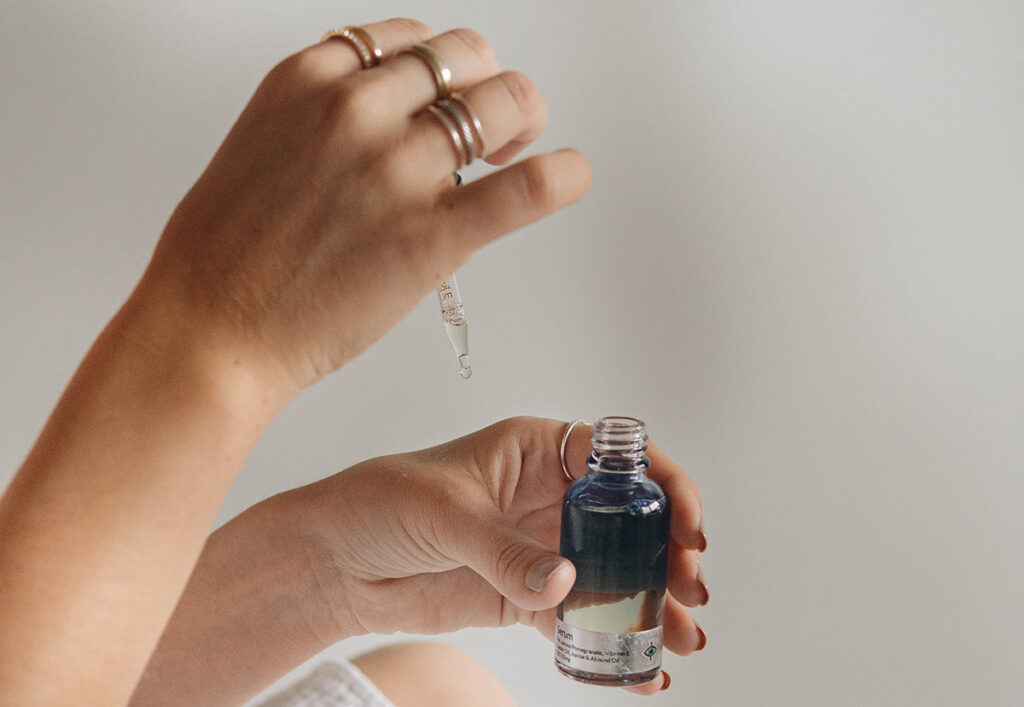
Peptides for Firmness & Repair
If you’re seeing fine lines or loss of elasticity, peptides and copper peptides help rebuild collagen structure. They’re perfect for a skin care routine for dry skin and aging concerns.
Sunscreen for Daily Defense
No matter how luxurious your products are, they won’t work if you skip SPF. Broad-spectrum sunscreen is the cornerstone of any daily skin care routine for dry skin, protecting against UV-induced wrinkles, dark spots, and dehydration.
Led Light Therapy as a Boost
If you enjoy a bit of high-tech self-care, low-level red light therapy can enhance firmness and reduce fine lines. It’s gentle, noninvasive, and perfect for dry or mature skin types — a game-changer in any dry skin care routine at home.
Now that you know the science behind the strategy, let’s break down each step and the best skin care products for dry skin I personally use and love.
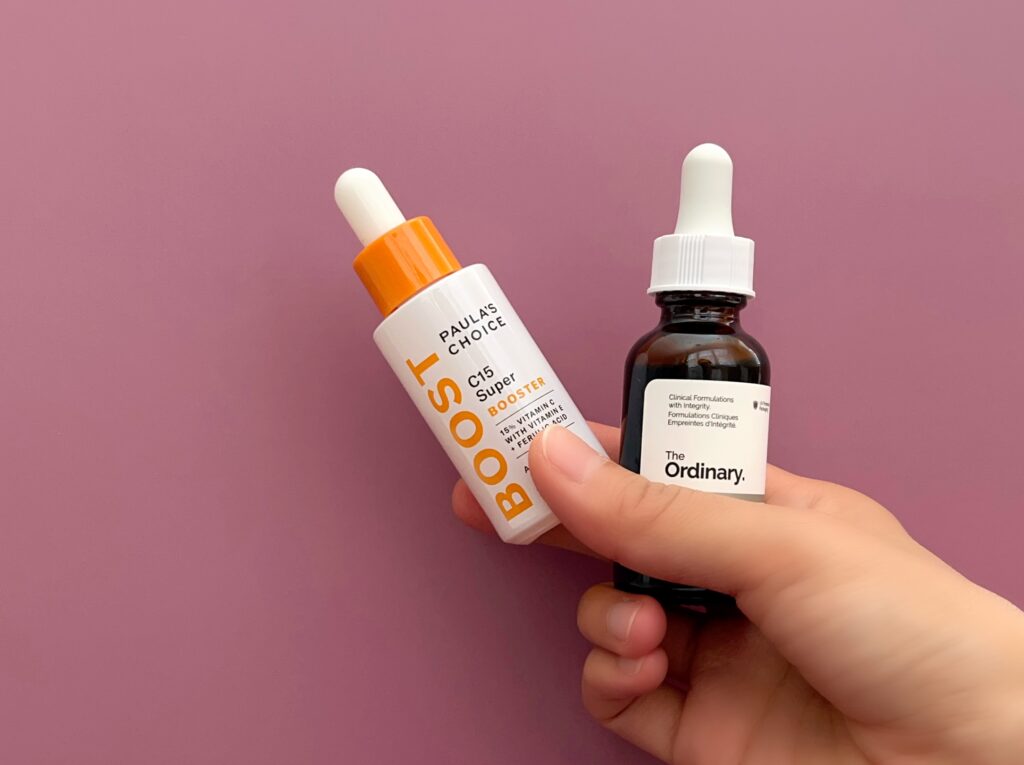
This post may contain affiliate links. Please read disclosure.
Step 1: Cleanse (or Just Rinse) Gently
When it comes to skin care routine for dry sensitive skin, less is more. Most mornings, I simply wash my face with lukewarm water. Over-cleansing can strip the skin’s natural oils and worsen dryness.
Every other day or so, I use La Roche-Posay Toleriane Hydrating Gentle Face Cleanser, formulated with niacinamide and ceramides. Niacinamide calms redness and strengthens the barrier, while ceramides help seal in moisture — essential for anyone seeking skin care for very dry skin. And, it is infused with La Roche-Posay’s proprietary spring water which is loaded with prebiotics and minerals.
It’s fragrance-free, pH-balanced, and one of the best drugstore skin care routine for dry skin cleansers you’ll find.

💡 Pro Tip: During colder months, this becomes my go-to winter skin care routine for dry skin cleanser, as it’s hydrating enough to prevent that tight “after-wash” feeling.
Step 2: Apply Vitamin C Antioxidant Serum
After cleansing (or rinsing), I reach for Paula’s Choice BOOST C15 Super Booster, my favorite antioxidant serum and liquid gold for tired, dull skin. It contains 15% vitamin C, vitamin E, and ferulic acid — a proven trio for fighting oxidative stress, fading dark spots, and improving firmness.
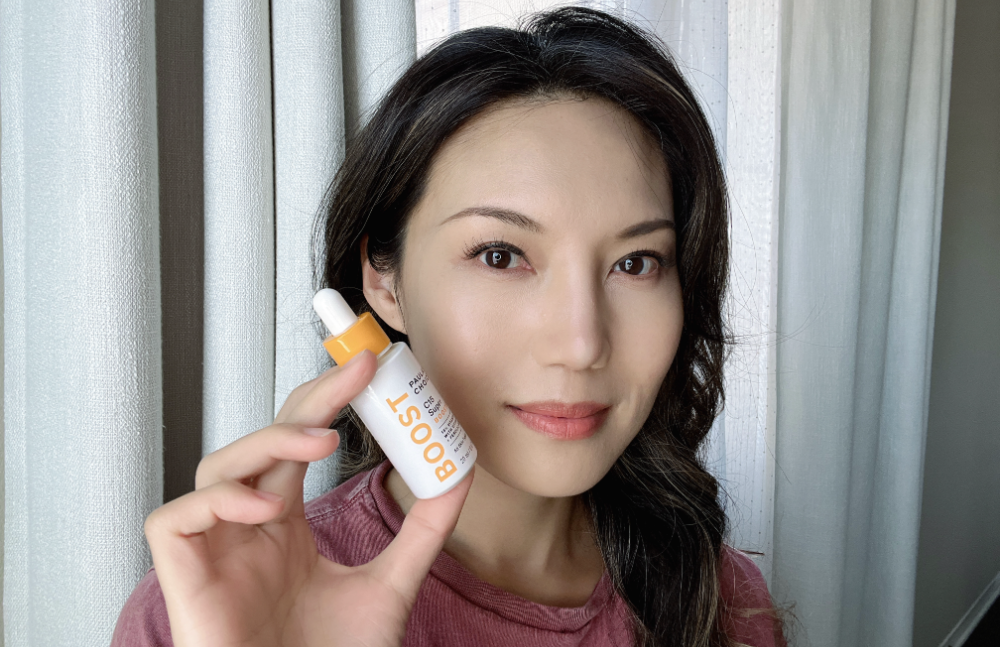
Because this formula is watery, I treat it like a toner and apply it directly to clean skin. Vitamin C works best when it’s the first active layer. It’s a must-have in any natural skin care routine for dry skin, helping to protect against daily UV damage while giving you that fresh, lit-from-within glow.
Clinical studies confirm that consistent vitamin C use can reduce wrinkles and improve overall skin tone within 12 weeks (2). I personally noticed brighter skin after I incorporate this in my morning skincare routine.
Vitamin C in the morning and retinol at night are one of skincare’s most powerful combinations for brightening and firming skin. If you’re new to retinol or want to make sure you’re using it right, I have a full breakdown in my Complete Guide to Retinol

Step 3: Alternate Between Brightening and Firming Serums
Depending on what my skin needs, I switch between two targeted treatments — both ideal for a skincare routine for sensitive dry skin.
Option 1: TOSOWOONG Arbutin 7% + Tranexamic Acid 4% Cream
This serum is packed with arbutin, tranexamic acid, niacinamide, and glutathione — a powerhouse blend for tackling pigmentation, sun spots, and uneven tone. Arbutin and tranexamic acid inhibit melanin production, offering a gentle but effective brightening option. I also love that this comes in a lightweight cream formula, perfect for my dry skin.
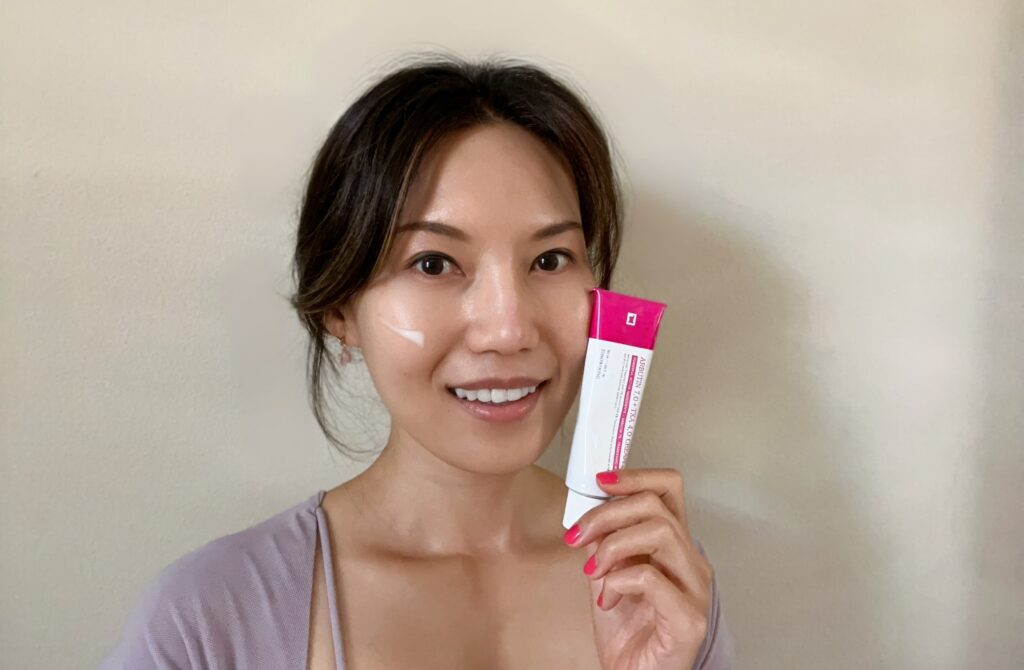
If you’re struggling with discoloration or melasma, this is a great choice for your dry skin care routine at home — especially for brightening without irritation.

Option 2: The Ordinary Multi-Peptide + Copper Peptides 1%
For days when my skin feels dull or tired, I opt for The Ordinary’s peptide serum. Peptides and copper peptides help improve elasticity and reduce fine lines, making it one of the best skin care routine for dehydrated skin options on a budget.
💡 Tip: Apply one or the other — not both at once. Give each serum a full minute to absorb before layering your moisturizer.
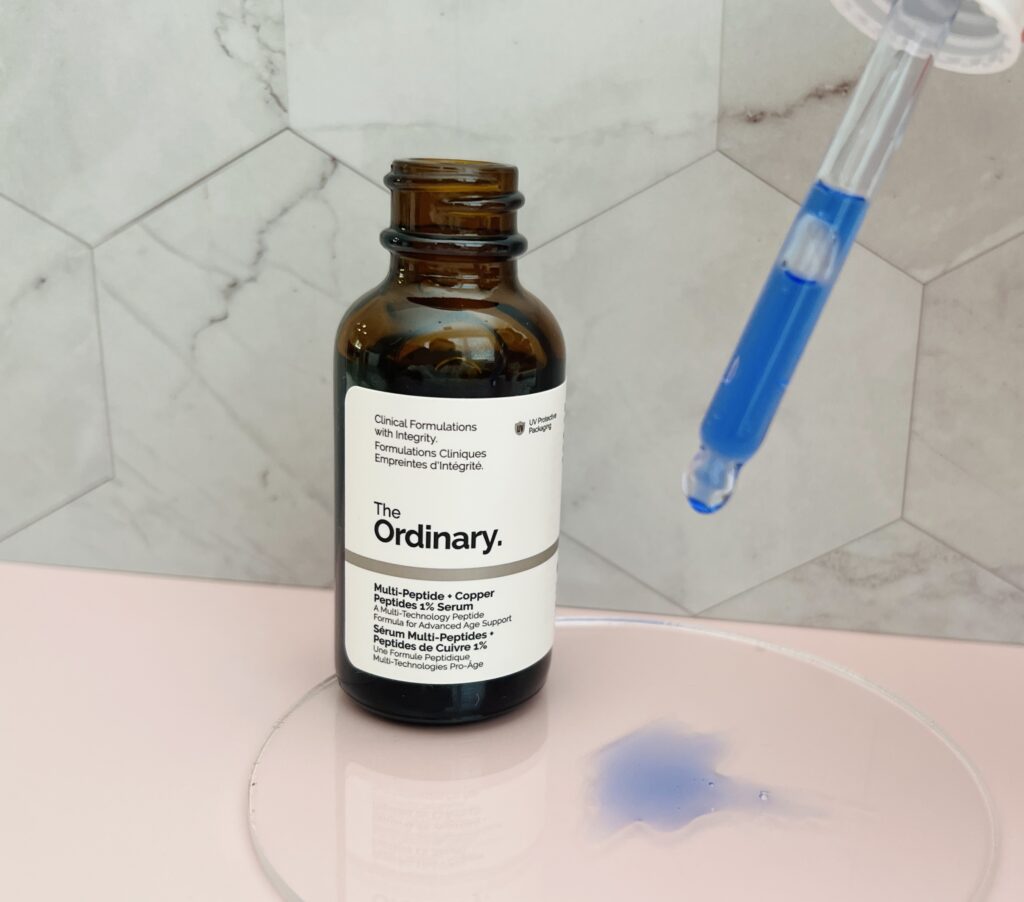
Step 4: Brighten & Awaken the Eyes
Before locking in moisture, I never skip my eye cream—and lately, TATCHA The Brightening Eye Cream has been my go-to for tired, dry mornings. I’ve always struggled with genetic dark circles, and while no cream can erase them completely, this one truly makes a visible difference. It brightens, hydrates, and smooths the delicate under-eye area without feeling heavy or greasy—perfect for a morning skin care routine for dry skin.
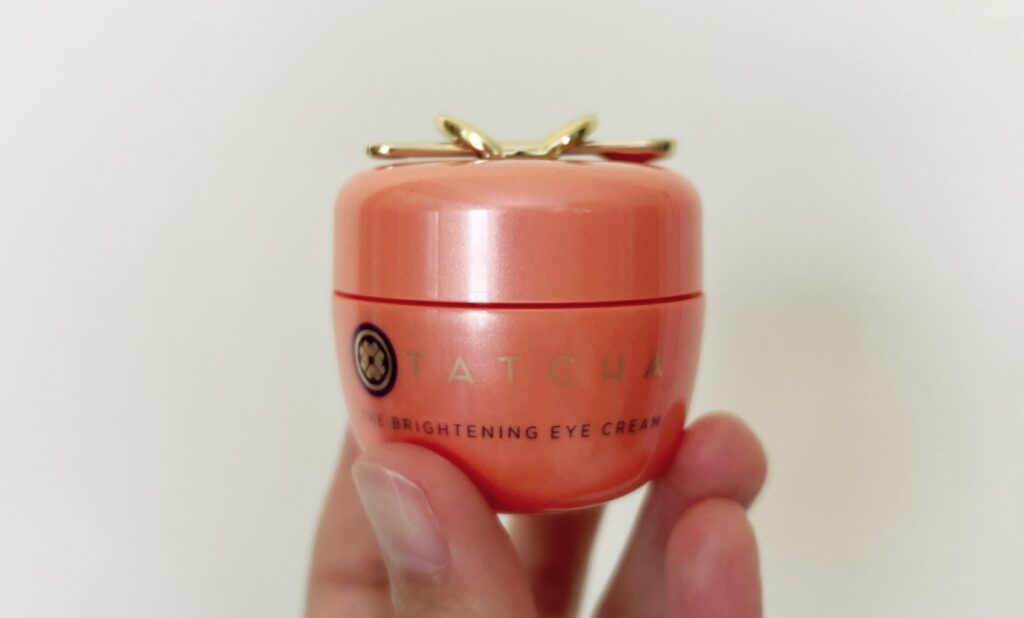
What makes it stand out is its Vitamin C–infused formula that targets dullness and discoloration in a gentle yet effective way. The addition of niacinamide helps strengthen the skin barrier and smooth texture, while hyaluronic acid keeps the eye area plump and moisturized throughout the day. Together, these ingredients work to create a brighter, more refreshed look—something every daily skin care routine for dry skin needs.
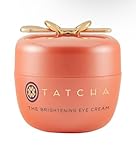
Step 5: Moisturize and Protect with SPF
No daily skin care routine for dry skin is complete without a good moisturizer and sunscreen combo. My personal favorite: La Roche-Posay Toleriane Double Repair UV SPF Moisturizer.
This multitasker hydrates with glycerin, niacinamide, and ceramides, while protecting with SPF 30. It keeps my skin dewy without feeling greasy, even in warmer months — perfect for a summer skin care routine for dry skin.

Sometimes, I mix in lavender face primer to add brightness to my complexion — a little natural skin care tip that helps balance my naturally sallow skin tone.
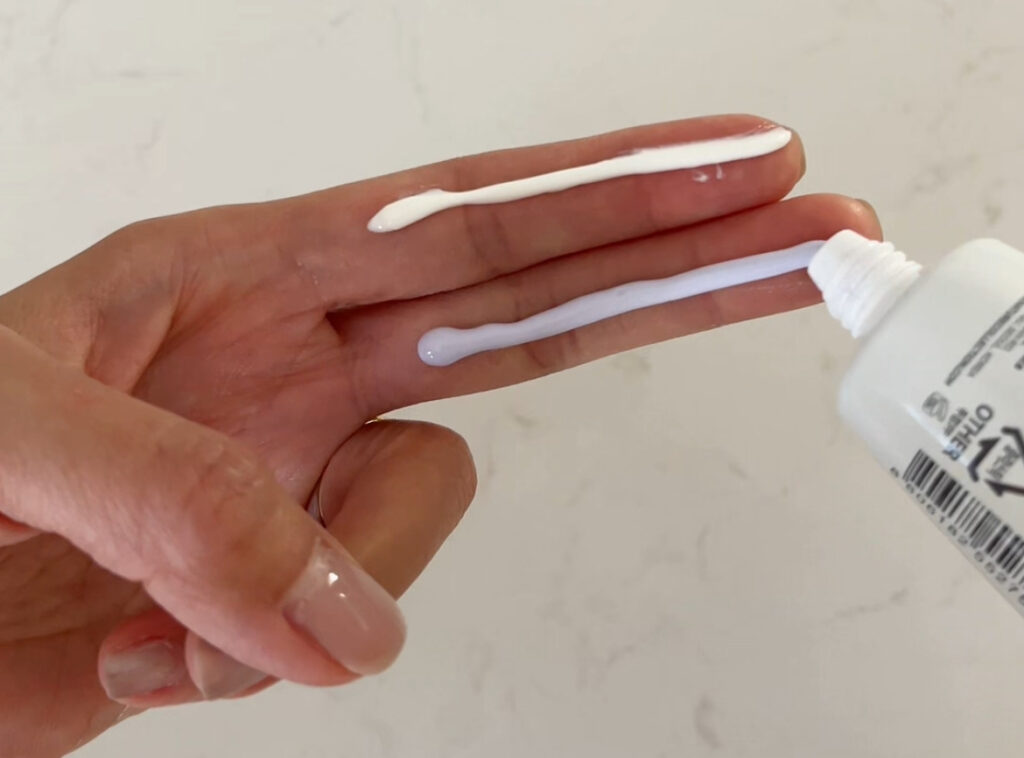
💡 Tip: Don’t skip SPF, even indoors. Blue light and UV rays can still contribute to collagen breakdown and dark spots.
Bonus : Weekend Glow Boost — Red Light Therapy
When I have more time on weekends, I treat myself to Dr. Dennis Gross LED Eye Mask therapy. Red light (around 630–850 nm) helps stimulate collagen and improve elasticity.
Clinical studies show up to a 15% reduction in wrinkle depth after consistent use (3). It’s gentle enough for skin care routine for dry sensitive skin and ideal for firming delicate areas like under the eyes.
It’s one of my favorite dry skin care routine at home upgrades — a mini spa session that fits into a busy mom schedule.

Pro Tips for a Radiant Dry Skin Morning
- Always pat, never rub — dry skin is delicate.
- Wait 30–60 seconds between layers to prevent pilling.
- Use a humidifier if you live in a dry climate — a simple skin care routine home remedy that helps retain hydration.
- Drink plenty of water and eat antioxidant-rich foods — the most underrated natural skin care tips of all.
FAQs About Your Morning Routine
Q: Can I skip cleansing in the morning?
Yes! If you didn’t apply heavy night creams or sweat much, rinsing with water is fine. Over-cleansing can worsen dryness, so keep it gentle. You definetely should avoid oil cleansing or double cleansing in the morning.
Q: Can I combine vitamin C with peptides?
Absolutely — just apply vitamin C first, then peptides. They complement each other beautifully in a skin care routine breakdown focused on firmness and brightness.
Q: What’s the best cleanser from the drugstore for dry skin?
The La Roche-Posay Toleriane Hydrating Gentle Cleanser is a top pick for any drugstore skin care routine for dry skin. Our whole family uses this and Amazon has various sizes!
Q: Is red light therapy safe for daily use?
Yes, as long as you follow the device’s recommendations. Studies confirm it’s safe for ongoing use in a natural skin care routine for dry skin. I noramlly use red light LED mask at night and occasiolly in the morning, if I have time.
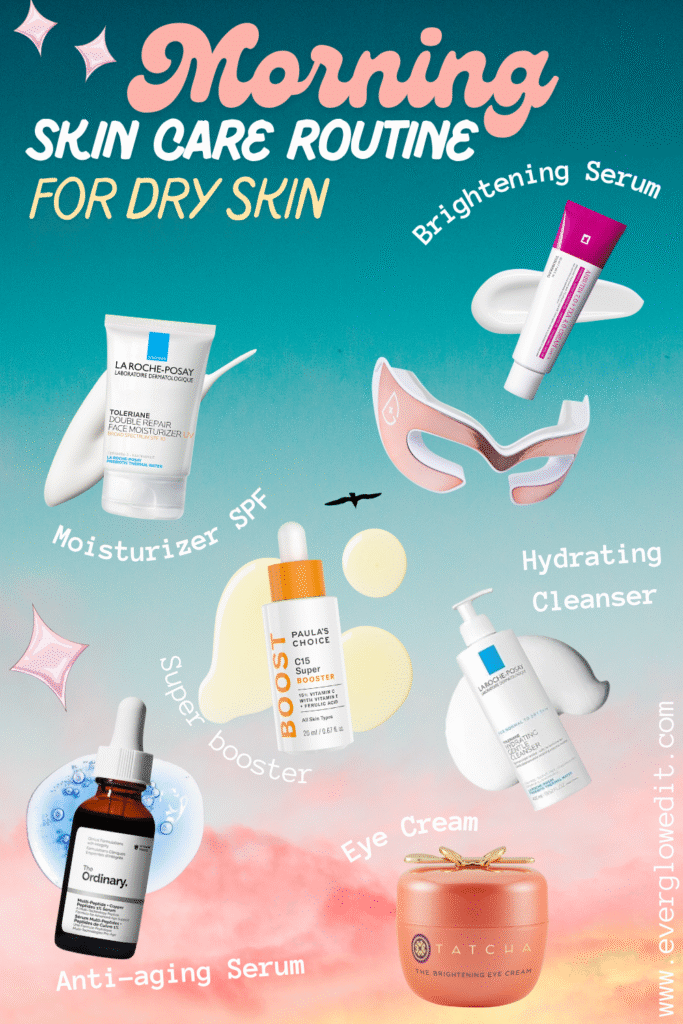
Final Thoughts: A Simpler Way to Glow
With just a few effective skin care routine steps — cleanse gently, use a vitamin C antioxidant serum, target your specific needs with peptides or brighteners, moisturize with SPF, and boost with red light on weekends — you’ll have a routine that’s realistic, restorative, and radiant.
If your skin feels nourished and calm instead of tight and flaky, you’ll know it’s working. Stick with it for a month, and you’ll start to notice smoother texture, fewer dry patches, and that healthy glow that only comes from consistency.
Your morning skincare routine is a form of self-care—and it doesn’t have to be complicated. And if you’re looking for more simple ways to care for yourself beyond skincare, be sure to read my post on Wellness Tips for Moms.
Ready to glow? Comment below to share your experience or explore my other posts on nighttime skincare and ingredient deep dives!
References
- Fitzpatrick R.E. Double-blind, half-face study of topical vitamin C for photodamage, Dermatol Surg 2002 (PubMed)
- Use of Topical Ascorbic Acid and Its Effects on Photodamaged Skin, JAMA Otolaryngology (JAMA Dermatology)
- Couturaud V et al. Reverse skin aging signs by red light photobiomodulation, Frontiers in Physiology 2023 (PMC)
- Vitamin C and Sunscreen in Clinical Practice: Photoaging Essentials, ACOF Journal 2024 (acofp.org)

